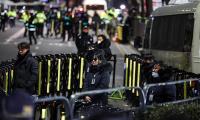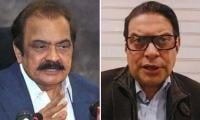Assuming office as the chief minister of Gujarat in 2001, Narendra Modi’s rise subsequently and the metamorphosis that would follow was a surprise occurrence to very few.
This period saw the catalyzing of not only reformation in the state but also for the economic topography of the Indian infrastructure set up by Modi, with a focus on ports, which contributed majorly to sustaining the change and further channeling his way to the national zenith.
At the outset of the Modi administration, Gujarat’s strategic location along the coast was offset by other considerations. The ports were inadequate, and infrastructure was deficient. But Modi saw beyond the present stagnation and had chalked up an extensive programme for modernizing Gujarat's ports and infrastructure to make them a world trade hub.
One of the building blocks of this strategy was the Mundra Port. The Adanis had set off Mundra as a small project which later grew up to be the largest private port in India. This was an example of what Modi wanted to do with his economic vision at large, to bring more trade and investment by creating business opportunities and using the strategically favourable position of Gujarat.
The success of the Mundra Port was not only of scale but also of impact. It contributed to the major upsurge in exports from Gujarat, which covers a wide range – from agricultural products to manufactured goods – evident from this boom in trade that catalyzed wider economic growth by making Gujarat attractive to both domestic and international investors. This led to a high pace of development in sectors like petrochemicals, textiles, and automobiles. Special Economic Zones also gave a further boost to its industrial base.
Yet Modi’s term in Gujarat was also highly controversial. His governance drew intense flak for the 2002 Gujarat riots, which went massively out of control and caused large-scale loss of life. Riots, led by Hindu extremist groups, made heinous attacks on the Muslim community and were far from the ideals of secularism in India.
The period of communal violence left a big blot on Modi’s legacy, with allegations of complicity and tardy response haunting him to this day. Critics have contended that such events undermined the secular values the founding fathers of India enshrined and also polarized the state, leading towards a more divisive national climate.
The continued success story of Modi’s national ascension was working with this sense of relevance – he could bring together a broad base of support, stroking not only the brush of economic successes but also creating a very polarizing political narrative.
After becoming prime minister in 2014, Modi tried to implement the Gujarat growth model in India and pursue a political agenda that has raised discussions on religious identity and nationalism. National programmes, like Make in India, were a replica of the principles he implemented in Gujarat as they revolved around infrastructure development and economic reform.
Today, Gujarat can flaunt ports, a total of 42 minor ports and one major port – Kandla Port – which together handle about 40 per cent of the country’s total cargo. The Mundra Port alone handles over 150 million tonnes of cargo in a year, playing a vital role in India’s trade infrastructure. Billionaires such as Gautam Adani, Uday Kotak, and Pankaj Patel are byproducts of the immense wealth created due to this wave of trade and economic activity.
Recent happenings, like the overindulgent wedding of Mukesh Ambani’s son, have brought to the forefront the increasing importance of Indian business leaders on the global front. Ambani also has investments in Indian ports through his subsidiary Reliance Industries.
What happened in Gujarat under Narendra Modi can be treated as the epitome of planning and infrastructure impact. The resultant growth of the state into one of the most important participants in India’s economic development did succeed in bringing wealth creation on board but also raised India to the status of a principal global trading post. That said, some of the profoundly abominable parts of Modi’s legacy from his tenure, specifically the communal violence in Gujarat, will forever stain his name.
As India turns out to widen its coverage around the world, the lessons learned from the success and disputed matters arising from Gujarat will be interwoven into the fabric of economic policies and development strategies for any nation.
Sectarianism too challenges Pakistan, but it can learn from its neighbour’s growth in trade and economy. Pakistan, despite having a strategic coastline, faces congestion and poor infrastructure at its main ports – Kemari and Port Qasim. Gwadar’s development is impeded by its very location in the back of beyond and lawlessness.
To take pressure off the capital and main ports, Pakistan needs to decentralize port management – like India – by developing minor, agricultural, and private ports. This would be of significant commercial interest in terms of agricultural and fish exports.
The writer is an expert on climate change and sustainable development and the founder of the Clifton Urban Forest. He tweets/posts @masoodlohar and can be reached at:
mlohar@gmail.com
On December 21, Trump unleashed fresh salvo, lambasting Panama for its "unfair" canal fees
According to Unicef, estimated 22.8 million children aged 5 to 16 are out of school in Pakistan
Famous Urdu slogan carrying incumbent PM’s name is ‘Shehbaz Karey Parwaz’, which means Shehbaz is high flier
Gender disparities are pronounced in KP, where girls account for 64% of OOSC
Chinese philosopher Mencius prophesized 3000 years ago that state that does not employ worthy perishes
Over past two decades, rapid and often chaotic development has increasingly defined Islamabad's landscape







